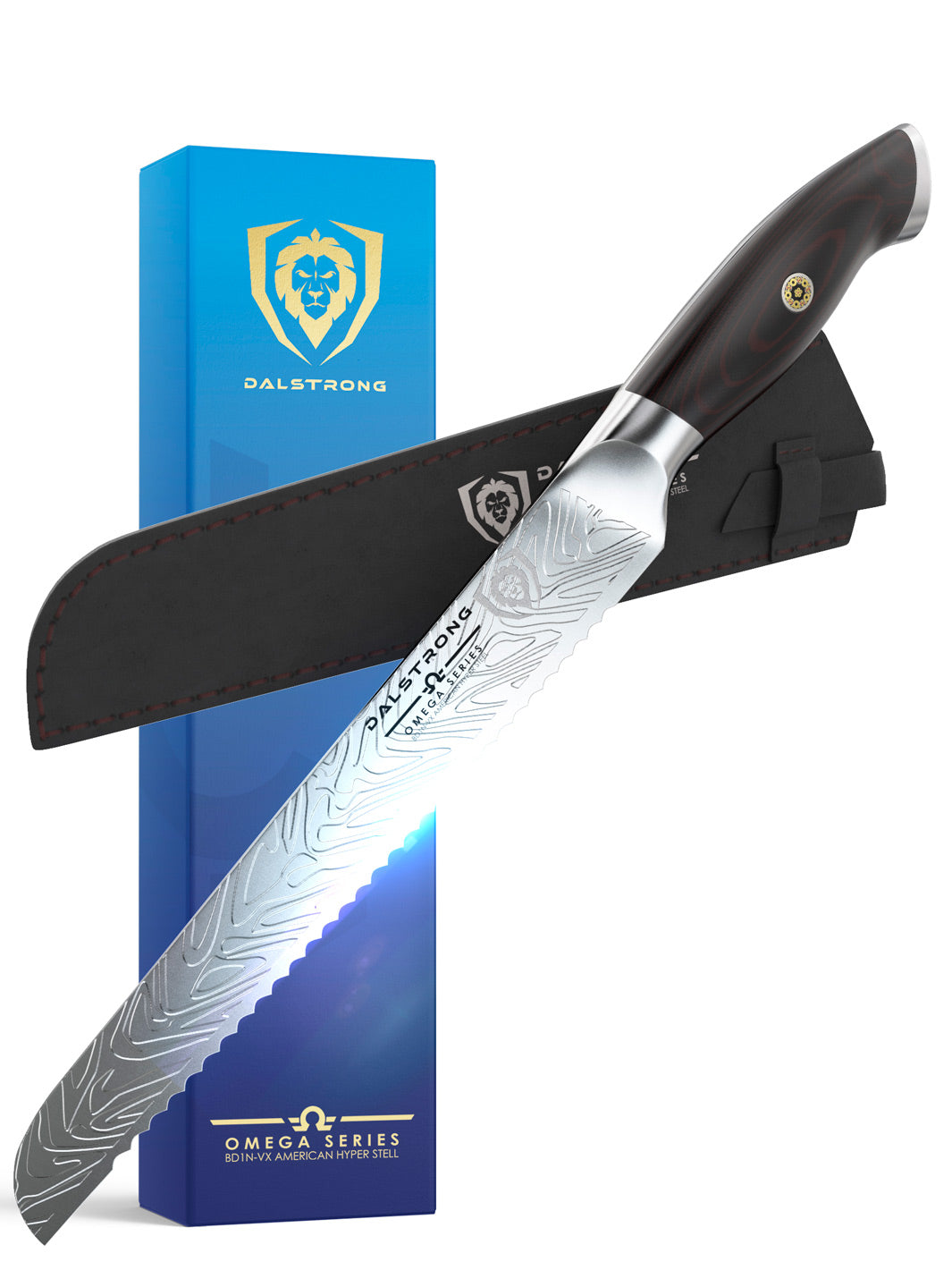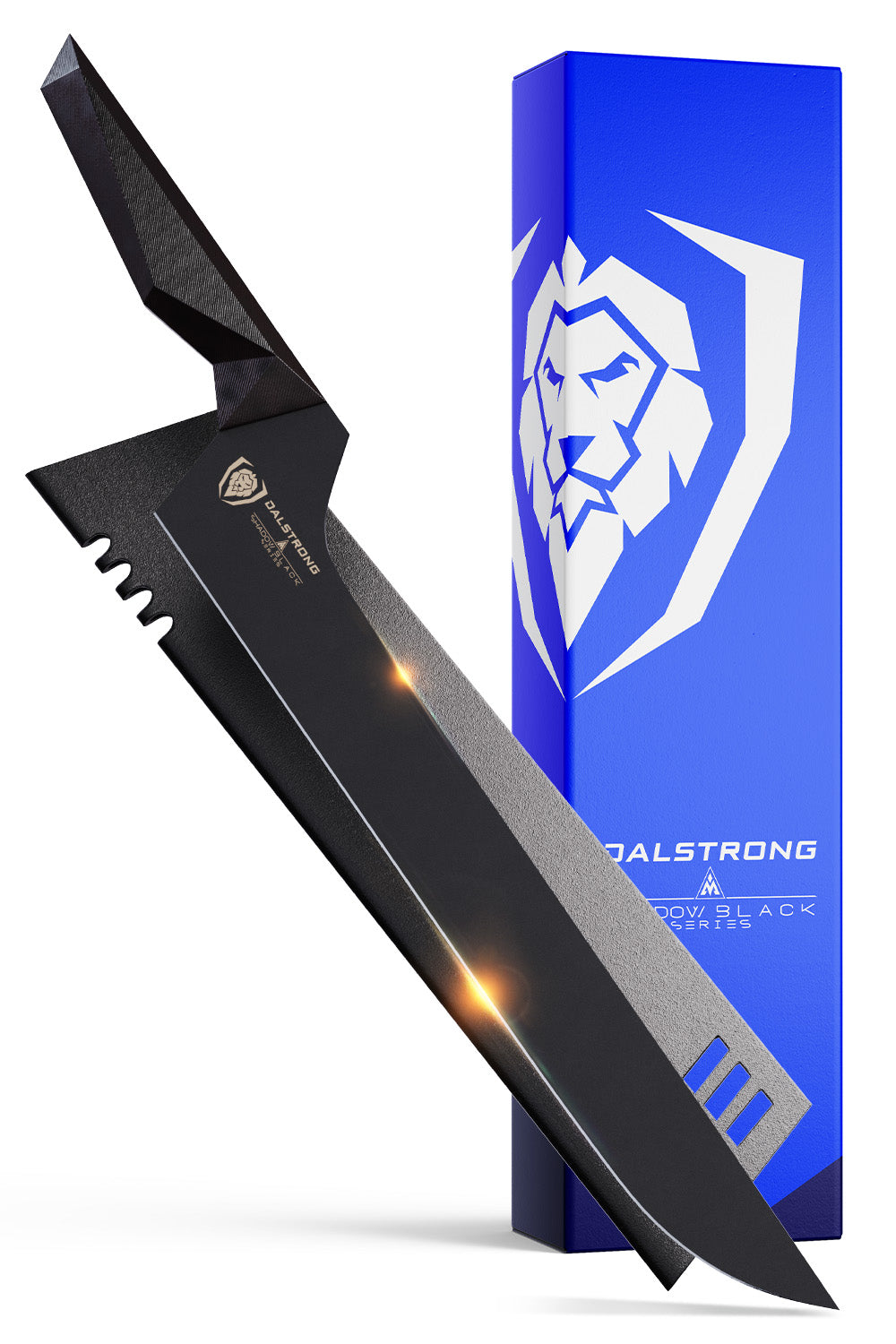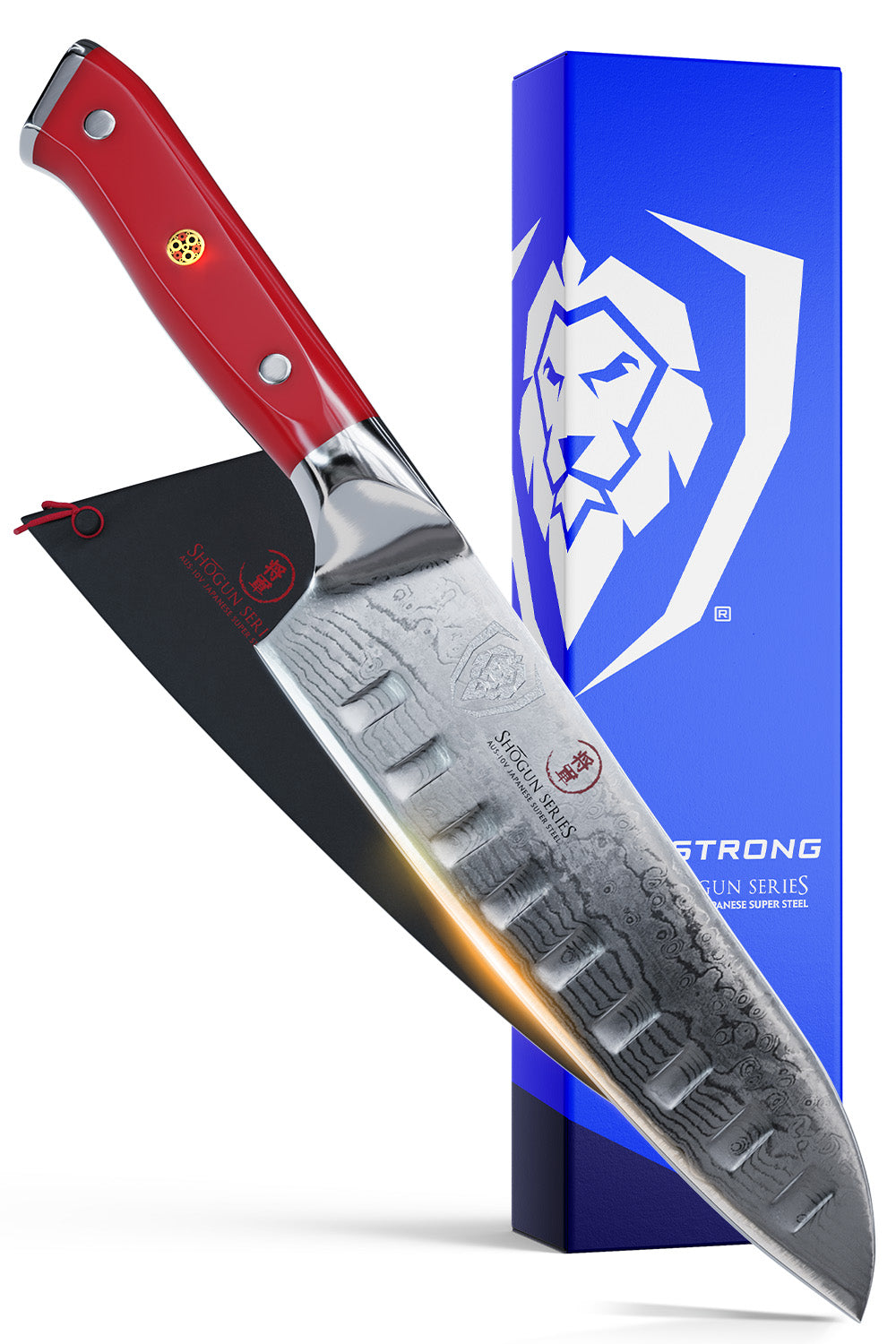 12" Frying Pan Wok ETERNA Non-stick Oberon Series
12" Frying Pan Wok ETERNA Non-stick Oberon Series
Quick Overview: How To Clean A Wok
- Let the wok cool and rinse with hot water.
- Utilize a soft sponge to softly scrub the surface.
- Use a scrub pad for stubborn residues. Be careful not to use steel wool and harsh chemical cleaners.
- Rinse thoroughly and dry the wok completely.
- Apply a thin layer of oil.
- Store Properly.
Cleaning a stunning wok can feel daunting, but it doesn’t have to. Let’s dive right into how you clean your wok without much arm work.
1. How To Clean A Wok
 12" Frying Pan Wok Silver Oberon Series Dalstrong
12" Frying Pan Wok Silver Oberon Series Dalstrong
Importance of Cleaning Your Wok
Before we delve into the cleaning process, let's understand why it's crucial to keep your carbon steel wok in pristine condition:
Prevent Rust
Carbon steel woks are susceptible to rust, especially if not cleaned properly. Rust can affect the taste of your dishes and compromise the wok's structural integrity.
Maintain Flavor
A well-seasoned wok imparts a unique, smoky flavor to your dishes. Proper cleaning helps preserve this seasoning, enhancing the taste of your food.
Hygiene
Thorough cleaning ensures that your wok is free from any residues or contaminants, promoting food safety and hygiene.
Longevity
Constant cleaning and care can extend the life of your wok, making it a wise investment for your kitchen.
How To Clean A Wok
Now, let's get into the step-by-step process of cleaning your carbon steel wok!
- Let the Wok Cool: After cooking, allow your wok to cool naturally. Avoid placing it in cold water.
- Rinse with Warm Water & Scrub: Rinse the wok with warm water. Use a soft sponge to remove any loose food particles. For stubborn residues, use a scrub pad or bristle brush. Be careful not to use steel wool, as it can damage the seasoning and surface of the wok.
- Avoid Harsh Cleaners: Never use harsh chemical cleaners or abrasive materials. Stick to hot soapy water and elbow grease to preserve the wok's seasoning.
- Scrub Brush for the Interior: For the interior, especially if food has stuck to it, use a scrub brush with soft bristles. This will help you clean without damaging the wok's patina.
- Rinse Thoroughly: Ensure you rinse the wok thoroughly to remove all soap and residue. Residual soap can affect the flavor of your dishes.
- Dry Your Wok Completely: After rinsing, dry your wok completely using paper towels. Moisture can lead to rust, so make sure it's bone-dry.
- Apply a Thin Layer of Oil: To ward off rust and maintain the wok's seasoning, add a thin layer of vegetable oil to the interior surface. rub off any excess with a paper towel.
- Store Properly: Store your wok in a dry place.
Read about the ten advantages of cooking with a wok, here.
2. How To Season A Wok
 12'' Frying Pan Wok | The Oberon Series | Dalstrong ©
12'' Frying Pan Wok | The Oberon Series | Dalstrong ©
Seasoning a wok is a fundamental step in its care and maintenance. This process not only prevents rust but also creates a unique non-stick surface known as the wok's patina.
Understanding the Importance of Seasoning
Rust Prevention
Carbon steel woks are prone to rust when exposed to moisture. Seasoning creates a protective layer that shields the metal from oxidation.
Flavor Enhancement
Over time, a well-seasoned wok develops a distinct smoky flavor that boost the taste of your dishes, a hallmark of Asian cuisine.
Non-Stick Surface
The wok's patina acts as a natural non-stick surface, reducing the need for excessive oil while cooking.
How To Season A Wok
- Wash and Dry Your Wok: Begin by washing your new wok with warm, soapy water and a soft sponge. This removes any protective coating applied during manufacturing.
- Heat the Wok & Apply A Layer of Oil: Place your wok on a stovetop burner over low heat. Apply a thin layer of vegetable oil to the whole interior surface of the wok.
- Heat the Wok Again: Turn up the heat to medium-high. As the wok heats, the oil will begin to smoke. This is a sign that the oil is polymerizing and forming the initial layer of seasoning.
- Spread the Oil: Use a pair of tongs and a folded paper towel to spread the hot oil evenly across the interior of the wok.
- Cool and Repeat: Turn off the heat and let the wok cool down. Once it's cool enough to handle, wipe away any excess oil with a paper towel. Repeat steps 3 to 6 several times until your wok develops a deep, glossy black patina.
- Maintain Your Seasoning: After each use, rinse your wok with hot water and scrub lightly with a soft sponge if needed. Stay away from using soap, as it can strip away the seasoning. Dry the wok thoroughly, apply a thin layer of oil, and put it in a dry place.
Kitchen Tips:
- Avoid acidic ingredients. Acidic ingredients like tomatoes can strip away the seasoning, so be cautious when using them in your wok.
- Cook with your Wok. Regular use of your seasoned wok helps maintain the patina and improves its non-stick properties.
- Re-season as needed. If you notice the patina deteriorating or rust spots forming, don't hesitate to re-season your wok.
3. Recommended Dalstrong Woks For You
1. 12" Frying Pan Wok ETERNA Non-stick | Oberon Series | Dalstrong
Crafted with top-of-class, USA-made Eterna® non-stick coating, this cookware is not only PFOA and APEO-free but built to last. This wok is designed for maximum versatility, fit for all stovetops, as well as induction, and safe for use in the oven, broiler, freezer, dishwasher, and refrigerator. It prioritizes your health by being PFOA and APEO-free, ensuring you can enjoy non-toxic cooking.
PROS:
- The 3-ply aluminum cladding ensures rapid and even heating, allowing you to cook a wide range of dishes with precision
- Unlike other aluminum cookware, Dalstrong's Oberon Series features additional thick gauge layers of non-reactive 18/10 stainless steel, making it incredibly robust and long-lasting.
- The Eterna® coating lasts significantly longer than traditional non-stick coatings, providing 26 times better food release than leading competitors, ensuring your cooking experience is effortless and enjoyable.
CONS:
- The cookware's durability and construction make it slightly heavier than some alternatives, which may require a bit more effort in handling for some users.
2. 12" Frying Pan Wok Silver | Oberon Series
Introducing the Oberon Series 3-ply Aluminum-core Cookware by Dalstrong – where myth meets modernity in your kitchen. This premium cookware draws inspiration from the mythical king and sorcerer Oberon, offering a high-performing and ultra-functional solution to elevate your culinary magic.
PROS:
- The cookware responds swiftly to changes in temperature, preserving the taste, color, and nutritional qualities of your food.
- Crafted with top-of-class non-toxic, non-hypoallergenic materials that are not only PFOA and APEO-free but also built to last.
- Features an engraved side-handle to provide more secure grip when cooking.
CONS:
- While the quality justifies the cost, the Oberon Series is positioned at a premium price range, which might be a consideration for budget-conscious buyers.
4. Frequently Asked Questions
How do you clean the inside of a wok?
To clean the inside of a wok effectively, start by cleaning it with hot water to take off any loose food particles. Use a soft sponge or a non-abrasive scrub pad to gently scrub the interior, avoiding steel wool or abrasive materials that could damage the wok's seasoning. Dry the wok thoroughly to prevent rust, and if necessary, apply a thin layer of oil to maintain its seasoning and prevent sticking.
Is there a special way to clean a wok?
Cleaning a wok doesn't require anything special, but it's essential to avoid harsh chemicals and abrasive tools that can harm the wok's surface. Remember to dry the wok completely to prevent rust and maintain its seasoning for future cooking.
How do you clean a wok with salt?
To clean a wok with salt, first wash it with hot water to remove any loose debris. Then, sprinkle a generous amount of salt on the surface, particularly any stubborn food residues or stains. Use a soft sponge or a cloth to scrub the wok gently with the salt, creating a paste. Rinse thoroughly with hot water, dry completely, and apply a thin layer of oil to preserve its seasoning and prevent rust.











